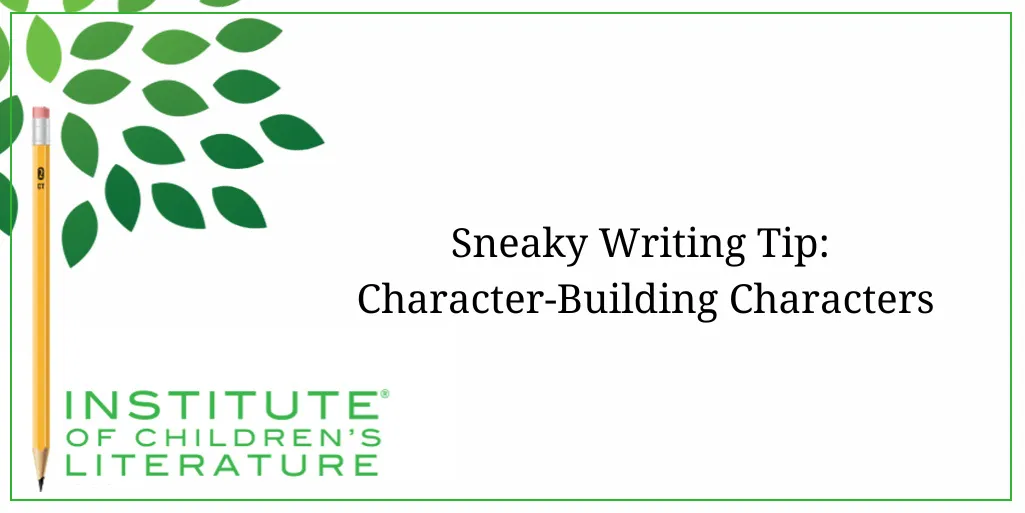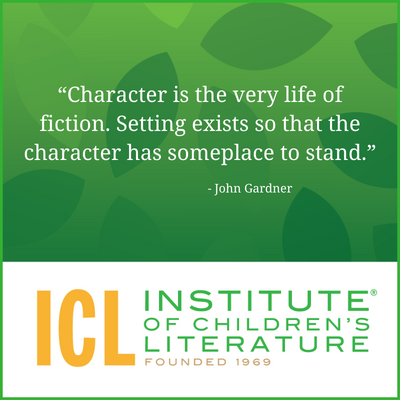
5 Ways Writers Can Prep for 2025 Goal Setting
Before we roll on to the new writing year, let’s harness our optimism for the blank slate before us and prepare for our 2025 Goal Setting just for writers.

Character covers a lot of ground in publishing. We create characters that populate our books and short stories. These characters are often the most important thing in fiction sales. But character can also be a subject and an important one. Many picture book publishers are specifically seeking out books designed to help build character virtues in the reader. And, we can all use positive character traits when we deal with publishers, agents, and readers. So this month we’ll explore all these aspects of character. But let’s begin with character as a subject. What does it mean to write a character-building book or short story and who wants things like that?
Picture books exploring character abound in publishing. As Mem Fox has said, “the reading should change the reader,” and that change is often about building a positive character trait in some fashion. One reason for this grows out of how plot works. Most of the time in a plot, a character is changed through interacting with and overcoming challenges. This change is usually a kind of growth, and with picture books, that growth is normally positive.

It is, therefore, no great surprise that books abound about how to treat others and how to control oneself. For example, Flashlight Press has Being Frank by Donna W. Earnhardt which focuses on a boy who is unkindly blunt but excuses this by saying “Honesty is the best policy” until he learns that kindness and tact have better results.
The same publisher has a book on bullying told from an unusual perspective, that of the bully. The book is Alley Oops by Janice Levy and follows the character’s change from bully to friend. In both, the exploration of character comes through the story. The character experiences the results of their behavior and their reaction to that provokes change. The character trait being examined isn’t in the title of either of these, but sometimes a character-building trait is explored quite directly. For example, in Be Kind by Pat Zierlow Miller and Jen Hill, a classroom of children who have done an unkind thing explores what it means to be kind and the ways that can manifest in our behavior.
Books that explore character traits are often about how we treat others, but they can also be about how we treat ourselves. For example, body autonomy is a character trait that is rather new to the picture book world, but it’s seeing some great books. In Don’t Touch My Hair by Charee Miller, the main character wants people to stop touching her hair, but she isn’t comfortable standing up for herself and would rather run and hide. Through the story, she comes to a place where she can stand up for herself and insist others respect her boundaries.
So, if character-building traits are popular in picture books and publishers like them, why do writers get so much advice not to include lessons in their stories? This quote from Mary Kole sums up the advice writers hear again and again, “Don’t teach in your picture book. Do not say out loud any lessons or morals. Do not preach. Do not talk down to the reader.” Doesn’t that seem like a conflict with the reality that picture books often explore character traits? How do we teach children about character without including a lesson?

Writing about character is simply writing a good story with depth. Instead of being lectured, characters are going about their day, and through their actions and the reactions of others, change happens. That change makes us aware of a specific character trait at play. In other words, stories are less preachy and more subtle. Readers have to think about the story a little.
For example, In Jabari Jumps by Gaia Cornwall, a young character who has been looking forward to jumping from the diving board is struck with fear of the height of the tall diving board. And as the reader watches the child’s perseverance and courage in action, they learn more about these traits. This avoids monologues that boil the traits down to a lecture.
This same process is explored in a different way in After the Fall by Dan Santat as Humpy Dumpty overcomes a fear of heights after a fall from his favorite wall. The traits of perseverance and determination are explored again (though with different provocation) in Giraffes Can’t Dance by Giles Andreae and again they are displayed by the title character as he works hard to prove that a giraffe can dance.
One interesting character book, The Good Egg by Jory John, even explores the idea that a good trait can be taken too far. In this book, an egg who puts all his energy into goodness ends up cracking under the pressure (literally), helping the reader learn that goodness doesn’t demand destroying who you are.
In each of these books, coming to understand the character trait is an exploration that grows out of the journey of the book. Things happen. A plot unfolds. And by the end, young readers have more insight about character.
 A Spoonful of Giggles
A Spoonful of GigglesOne thing that often makes a story engaging enough to hold a reader while they watch characters learn and grow is humor. Not every character trait book is funny. Many are quite serious and touching (though a book can be both funny and touching), but humor is a valuable ingredient, especially in a story where the character-building trait is explored more directly.
For example, in The Bad Seed by Jory John, the main character revels in his badness to humorous effect but ultimately learns that anyone can be positive if they really want to change. Equally, Grumpy Monkey by Suzanne Lang is about letting people have their bad days, but Jim Panzee, the very grumpy monkey, is funny as well as he reacts to both his feelings and to the help from his well-meaning friends.
So, what about your picture books and short stories? Do your characters grow and change through the story in positive ways? Does your story explore specific character-building traits? What methods do you use to engage the reader while exploring these things? Answers to these questions may help you tune your work in progress into a book that finds success in today’s crowded picture book market. And we all want that, don’t we?
With over 100 books in publication, Jan Fields writes both chapter books for children and mystery novels for adults. She’s also known for a variety of experiences teaching writing, from one session SCBWI events to lengthier Highlights Foundation workshops to these blog posts for the Institute of Children’s Literature. As a former ICL instructor, Jan enjoys equipping writers for success in whatever way she can.

Before we roll on to the new writing year, let’s harness our optimism for the blank slate before us and prepare for our 2025 Goal Setting just for writers.

Writers can be thin-skinned when it comes to getting feedback on their work. Let’s look at 4 ways to positively deal with constructive criticism!

Rejection is part of the territory when it comes to being a writer. Today we offer reflection for writers to help redirect your efforts after a rejection.
1000 N. West Street #1200, Wilmington, DE 19801
© 2024 Direct Learning Systems, Inc. All rights reserved.
1000 N. West Street #1200, Wilmington, DE 19801
© 2024 Direct Learning Systems, Inc. All rights reserved.
1000 N. West Street #1200, Wilmington, DE 19801
© 2024 Direct Learning Systems, Inc. All rights reserved.
1000 N. West Street #1200, Wilmington, DE 19801
© 2024 Direct Learning Systems, Inc. All rights reserved.

1000 N. West Street #1200, Wilmington, DE 19801
© 2025 Direct Learning Systems, Inc. All rights reserved.

1000 N. West Street #1200, Wilmington, DE 19801
©2025 Direct Learning Systems, Inc. All rights reserved. Privacy Policy.
9 Comments
This newsletter regarding character books really helped with unlocking some of my “stories” in my head that I may choose to write about one day! I had to grab some paper because the ideas wanted to be unleashed!
Hi Kelly. I’m so glad that you found the newsletter essay helpful in unleashing your ideas!